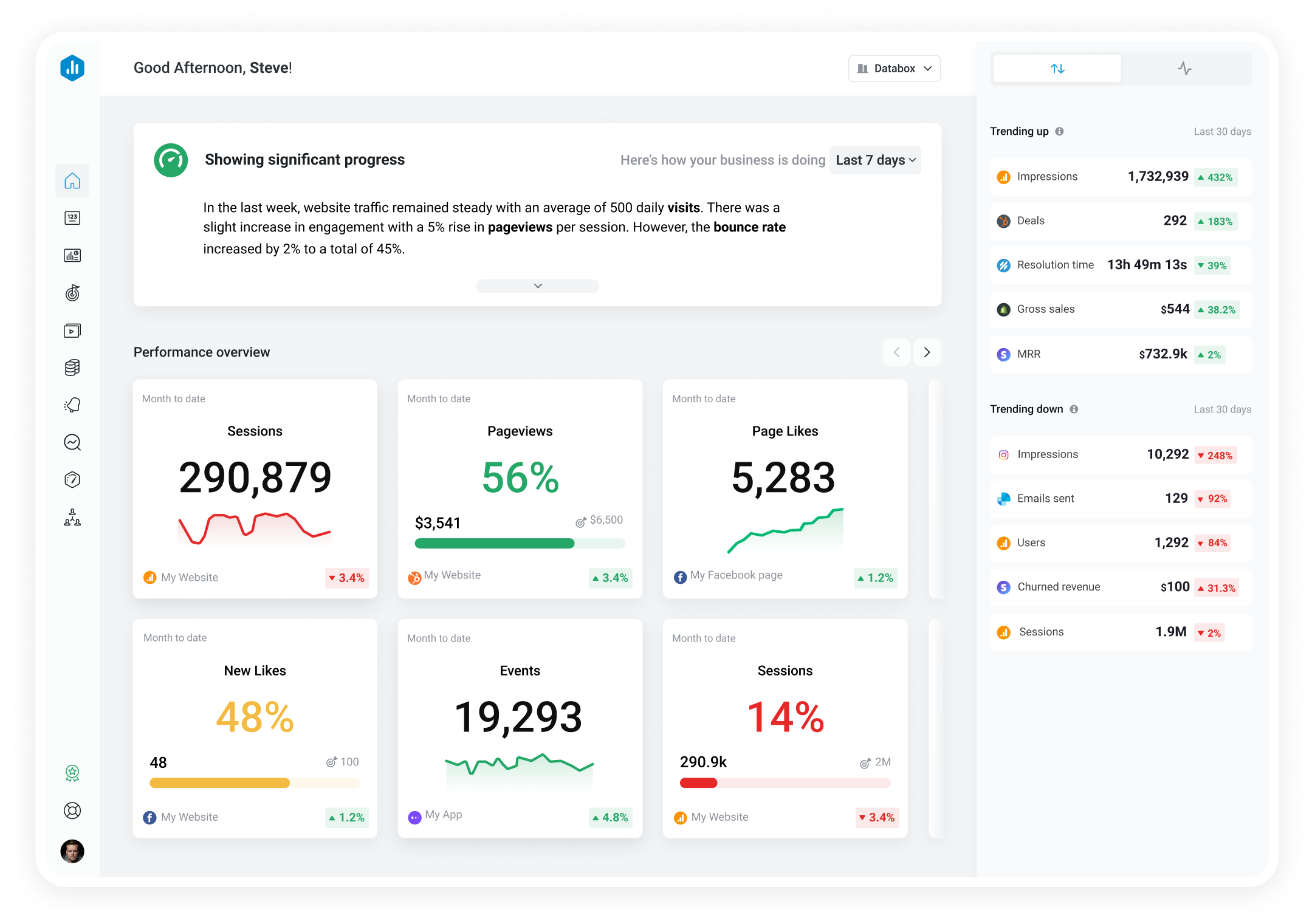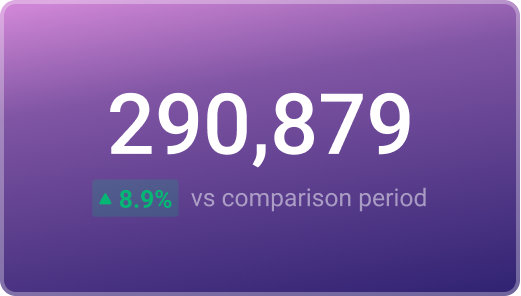Track all of your key business metrics from one screen
GET STARTED
 QuickBooks
Balance Credit Cards (Accrual)
QuickBooks
Balance Credit Cards (Accrual) This metric shows total credit card liabilities on an accrual basis by recording incurred charges and credits, giving a complete picture of outstanding obligations in QuickBooks.
With Databox you can track all your metrics from various data sources in one place.

Used to show a simple Metric or to draw attention to one key number.
Databox is a business analytics software that allows you to track and visualize your most important metrics from any data source in one centralized platform.
To track Balance Credit Cards (Accrual) using Databox, follow these steps:
 Goals
Goals Scorecards
Scorecards Metric Digest
Metric Digest Metric Builder
Metric Builder Data Calculations
Data Calculations Performance Screen
Performance Screen